UX/UI CASE STUDY
Redesigning the experience where style worlds shape digital emotion

| Client: | MOBILIA |
| Role: | UX/UI Designer, Valtech (eCommerce Division) |
| Tools: | Figma, Miro, OmniGraffle, JIRA, Confluence |
| Technology: | Adobe Commerce - Magento 2 |
| Website: | www.mobilia.ca |
Description
Mobilia is a high-end Canadian furniture brand known for its curated and contemporary home decor collections. Rooted in style, sophistication, and international inspiration, Mobilia originally brought its customers on an in-store journey through four distinct “Worlds of Style”: EURO, NATURAL, WOW and SPONTANEOUS, each reflecting a unique design philosophy. The brand blends craftsmanship and creativity to offer exceptional furniture that elevates everyday living.
Goal
To design a visually compelling and responsive eCommerce website that brings Mobilia’s in-store experience online through rich, editorial storytelling. The objective was to create a humanized, omnichannel journey that enhances trust, mirrors the brand’s personality, and inspires customers through its signature Worlds of Style. The ultimate ambition was to shape Mobilia into a digital lovebrand, one that balances design sensibility with emotional resonance, encouraging exploration and conversion.
Problem statement
Mobilia needed a digital platform that could authentically reflect its bold brand DNA and style authority. The existing website lacked emotional engagement and failed to support the omnichannel behaviors of modern shoppers. With 73% of customers using multiple channels during their shopping journey, Mobilia’s digital presence had to evolve into a refined, intuitive environment that captures the feeling of its physical showrooms while offering inspiration, confidence, and clarity.
How might we
To frame the design challenge and open up space for innovative thinking, I translated key research insights and user needs into "How Might We" questions, an essential Design Thinking technique. This helped explore opportunities around emotional engagement, intuitive navigation, and storytelling across digital and physical touchpoints. After distilling multiple angles, one guiding question emerged as most impactful: How might we recreate the emotional impact of Mobilia’s showroom storytelling in a digital environment?
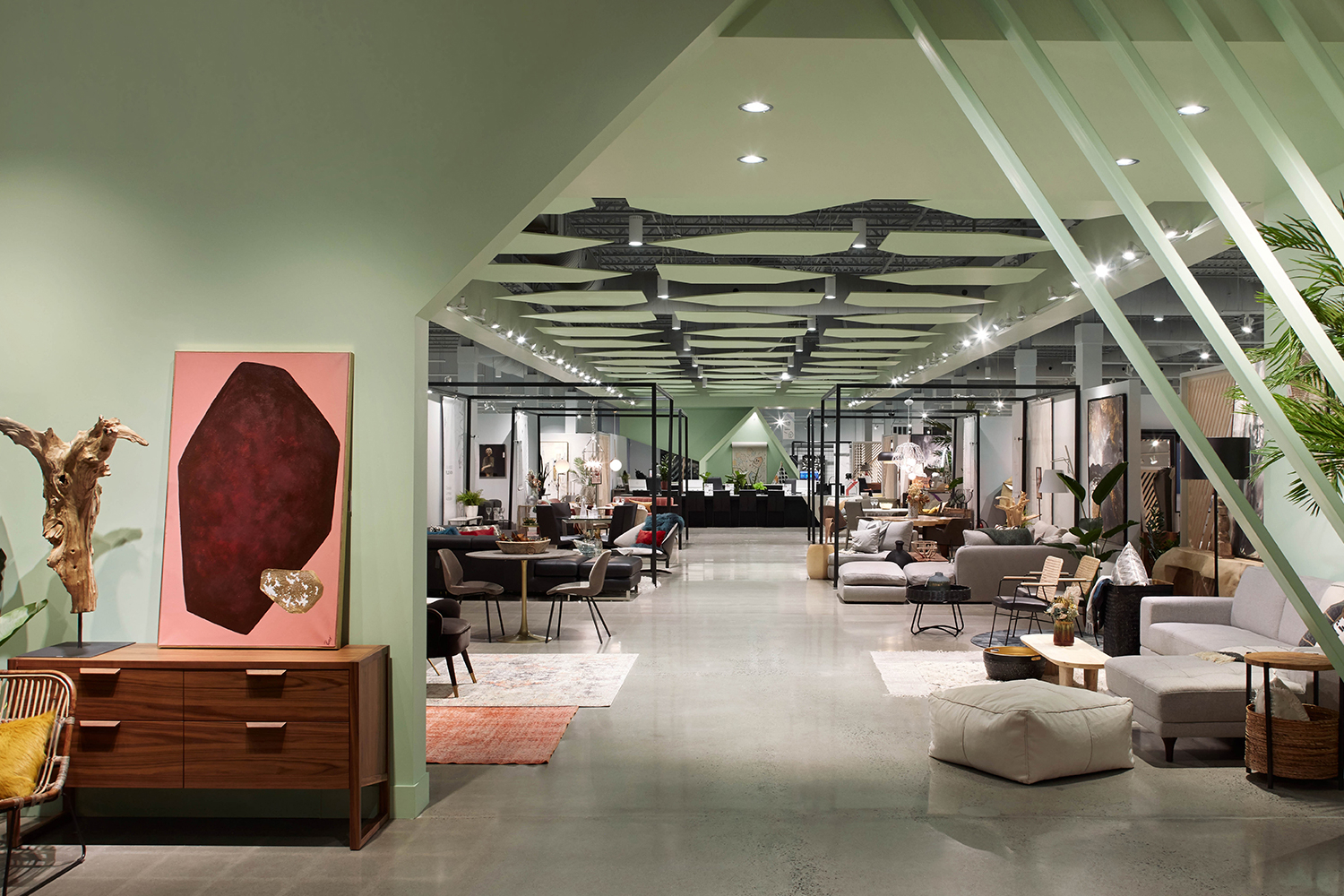
Outcome
I designed a fully responsive eCommerce experience that connects online and in-store touchpoints through Mobilia’s Worlds of Style. The redesign offers users an emotionally engaging journey that mirrors in-store storytelling, seamlessly blending lifestyle inspiration with product exploration. The result is a holistic and premium experience that elevates the brand and encourages confident purchase decisions. The website was built with Adobe Commerce.
Research
I analyzed user interview data and digital behavior insights provided by the client to understand pain points and opportunities. This research helped identify gaps in the online experience, including a lack of emotional connection, unclear product navigation, and the need for editorial-style content that helps customers visualize their space. Mobilia’s 4 Worlds of Style emerged as a key framework to guide customers toward curated choices aligned with their taste and identity.
Competitor analysis
To position Mobilia competitively, I reviewed global furniture and lifestyle brands with a strong digital presence. I focused on navigation systems, content strategy, visual hierarchy, and how competitors tell stories through interiors. The analysis revealed opportunities to leverage Mobilia’s unique in-store layout, based on style worlds, as a differentiator in the digital space. This provided curated discovery paths not typically offered by competitors.
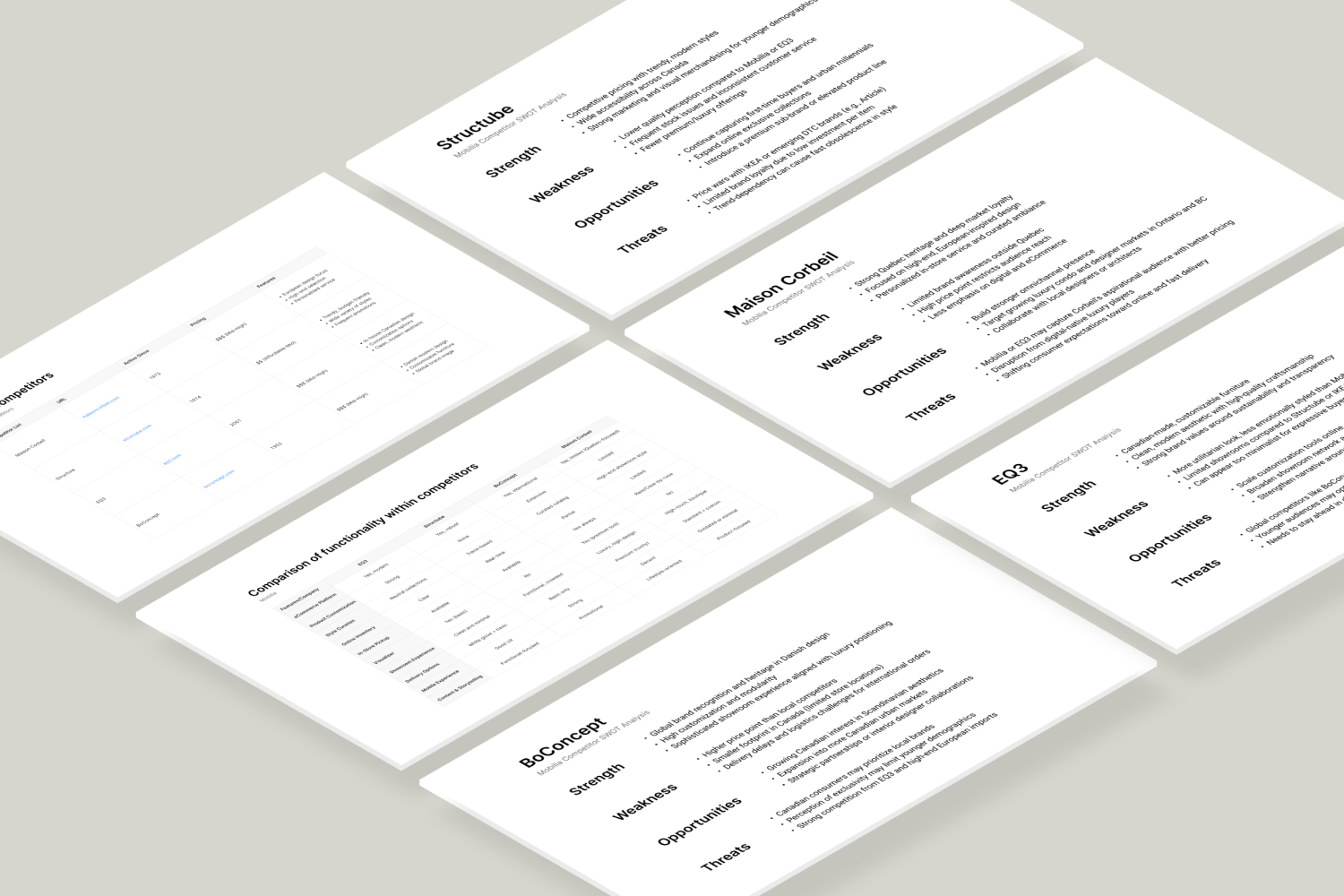
User interviews
Main themes explored during user interviews
-
Emotional connection: Users want inspiration and context when browsing, not just product grids.
-
Shopping confidence: Trust in the brand comes from clear information, quality visuals, and reviews.
-
Navigation & discovery: Desire for guided browsing based on design styles, not only product types.
-
Omnichannel experience: Users expect continuity between the website and showroom visits.
-
Visual appeal & aesthetics: Strong demand for a refined, editorial, high-end digital presence.
-
Future needs: Wishlist features, style quizzes, and personalized recommendations to support self-discovery.
Interview key learnings
Users were drawn to storytelling and lifestyle inspiration. They appreciated when the website felt like a design magazine where browsing led to ideas. However, they often felt lost in product-heavy interfaces and desired curated guidance. There was a strong need for an online experience that helped them project their personality into their living spaces while also reflecting Mobilia’s sense of style and expertise.
Value proposition
For: Design-conscious furniture shoppers seeking high-quality, curated home decor.
Who: Wants to be inspired, guided, and reassured through a digital experience that reflects their aesthetic
The product: A responsive, immersive eCommerce platform built around Mobilia’s Worlds of Style.
That: Blends editorial storytelling, refined aesthetics, and seamless navigation to create an omnichannel journey that builds trust, sparks creativity, and encourages exploration and purchase.
Personas
After synthesizing research insights, I developed key personas to capture the motivations and decision-making styles of Mobilia’s audience:
-
Sophie, the urban professional: Seeks elegant, functional pieces that reflect her fast-paced lifestyle and refined taste.
-
Kristin & James, the design-loving family: Look for beautiful, durable furniture that blends creativity, comfort, and family life.
-
Denis, the stylish retiree: Values comfort and craftsmanship, curating a home that tells his story through timeless design.
These personas guided UX decisions from content hierarchy to filter logic and visual direction.
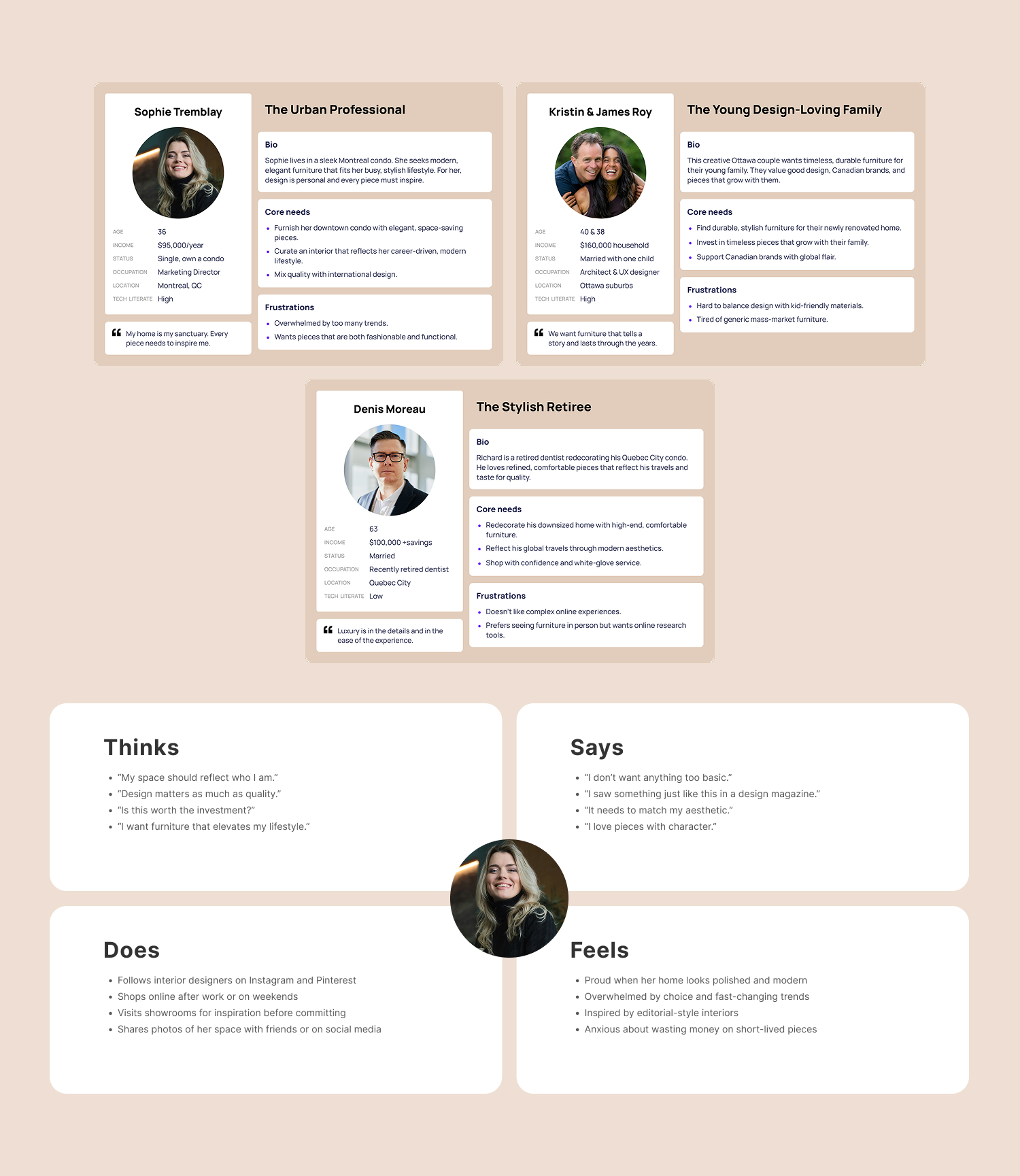
Behaviour journey map
At this point in our project, I created a behavioral map, a visual tool that outlines the end-to-end steps a user takes to achieve a target behavior, including actions, touchpoints, and potential barriers. To visualize the typical customer experience, I mapped end-to-end interactions from discovery to purchase.
Starting scenario: Users encounter Mobilia content online (ads, social media, search) and land on the redesigned homepage.
Target behavior: Browse through the Worlds of Style, select favorites, learn about pieces through editorial content, and move into the shopping flow.
Desired outcome: Customers feel inspired, supported, and excited to complete their purchases online or in-store.
The journey mapping revealed key friction points and opportunities to build a more intuitive and emotionally driven experience.
Information architecture
I restructured the site’s navigation to reflect style-first exploration instead of traditional product categories. Working with an SEO specialist, we aligned this structure with keyword strategy to balance usability and search performance. The Worlds of Style became a central organizing principle, giving users clear and inspiring pathways through the site.
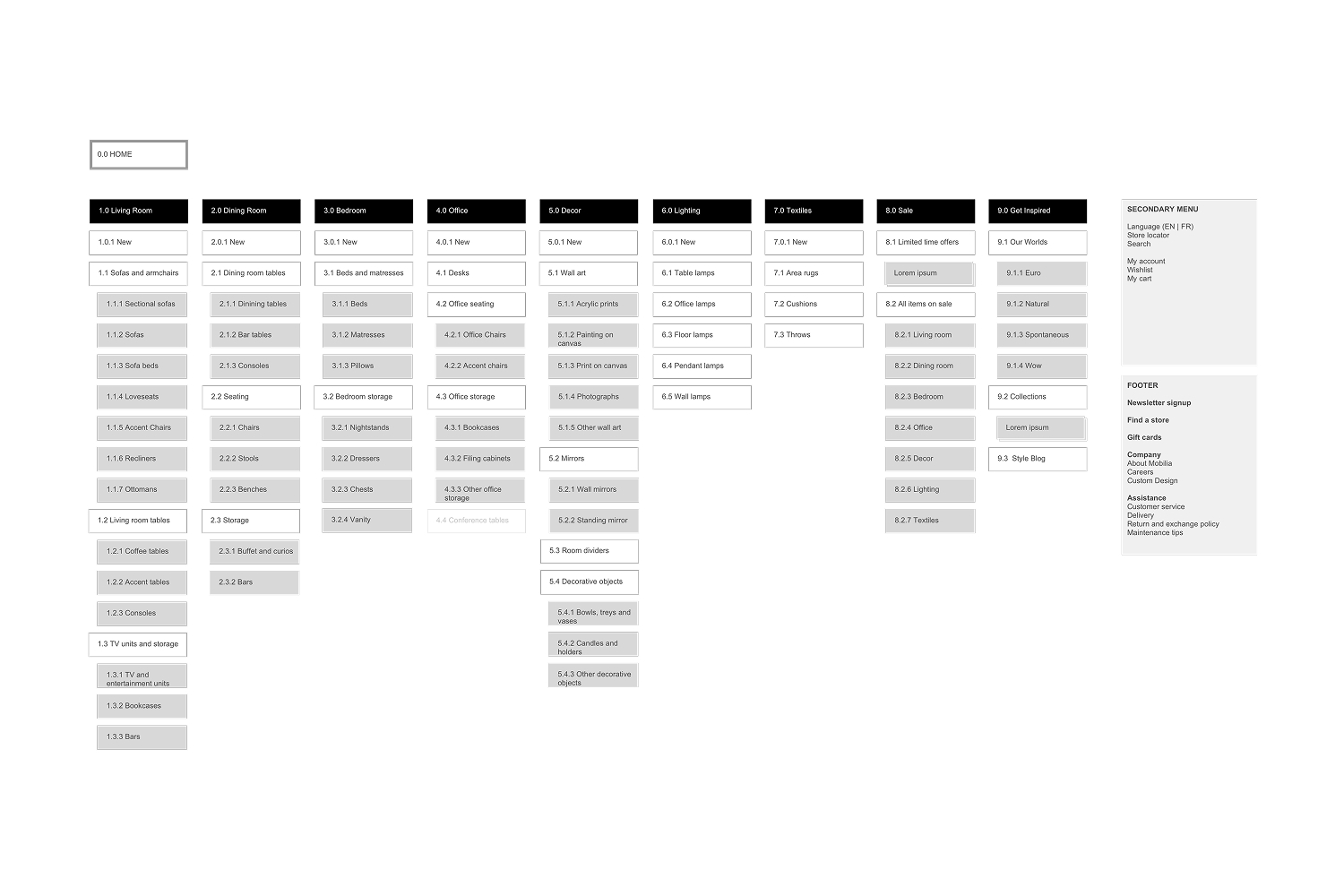
Prototype & testing
Using Figma, I developed a mid-fidelity prototype to translate the design vision into a testable flow.
Key innovative features included
Worlds of style navigation: An immersive guide inviting users to explore rooms and moods by design world.
Emotion-led purchase flow: Elegant navigation and checkout flow aligned with brand tone.
Pre-configured modules: Customizable, pre-configured modules featuring rich lifestyle visuals offering greater flexibility and significantly reducing development costs.
Product information management: Collaborated on implementing a PIM system to enrich product pages with detailed, high-quality content that enhances storytelling and user confidence.
Floor model availability: Added a feature allowing users to check which store locations have a floor model available for in-person viewing.
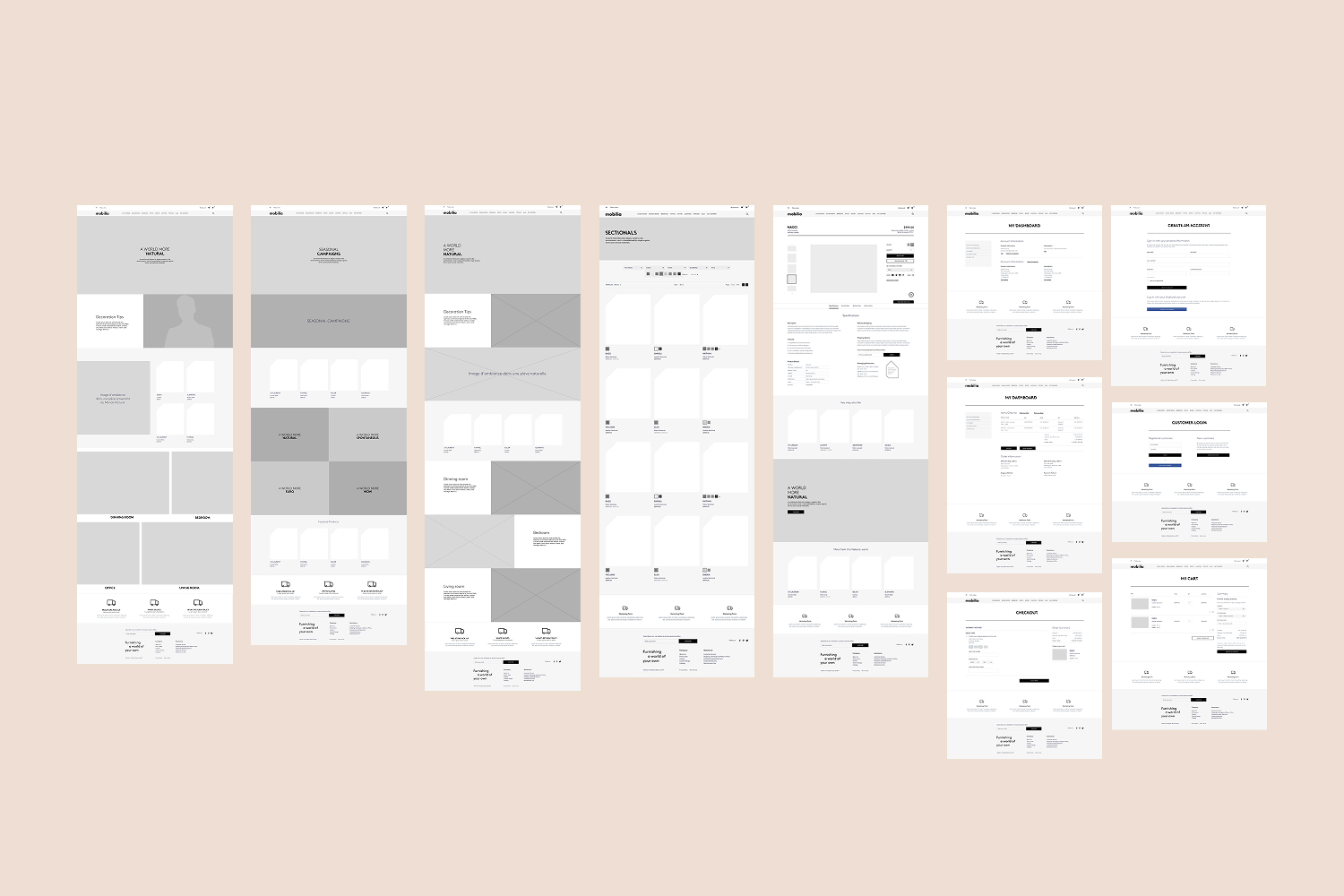
Feedback from prototype tests
Users described moments like “a spark of inspiration” and praised the homepage for offering “the feeling of a design magazine.” The integration of style worlds helped users navigate more confidently while emotionally connecting with the brand.
UI design
I led the UI work with a focus on translating Mobilia’s bold and modern visual identity into a cohesive, digital-first language. This included typographic systems, grid structures, micro-interactions, and a photography style that highlighted both product beauty and room ambiance. Every component was crafted to maintain consistency while enabling emotional storytelling.

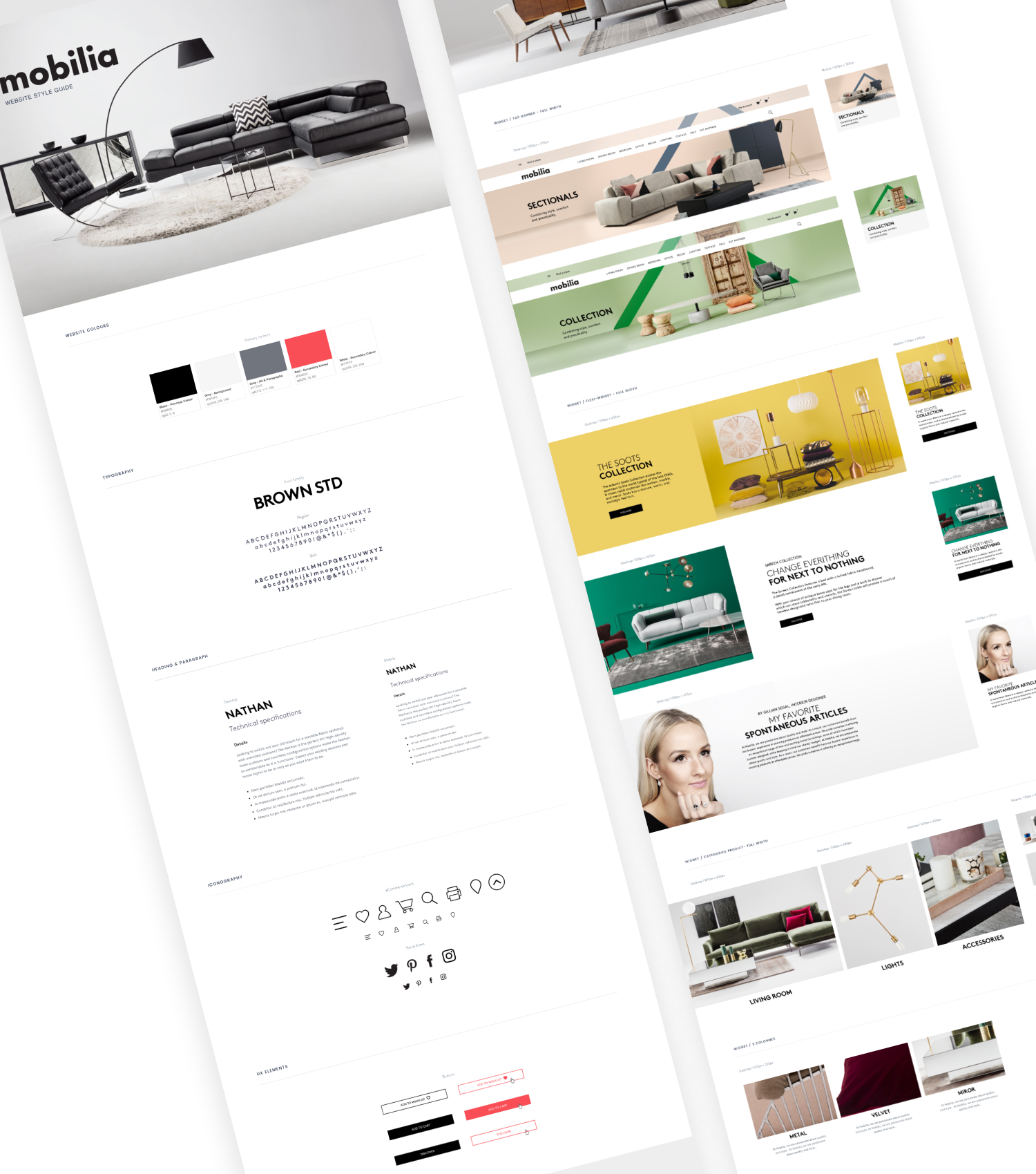
Team & methodology
I worked in Agile Scrum sprints with developers, a Scrum Master and a Product Owner. From ideation, visual design, and user testing to stakeholder alignment, documentation, I led a collaborative process with weekly sprints and ongoing feedback to ensure Mobilia’s digital vision was realized in alignment with both user needs and business objectives.
